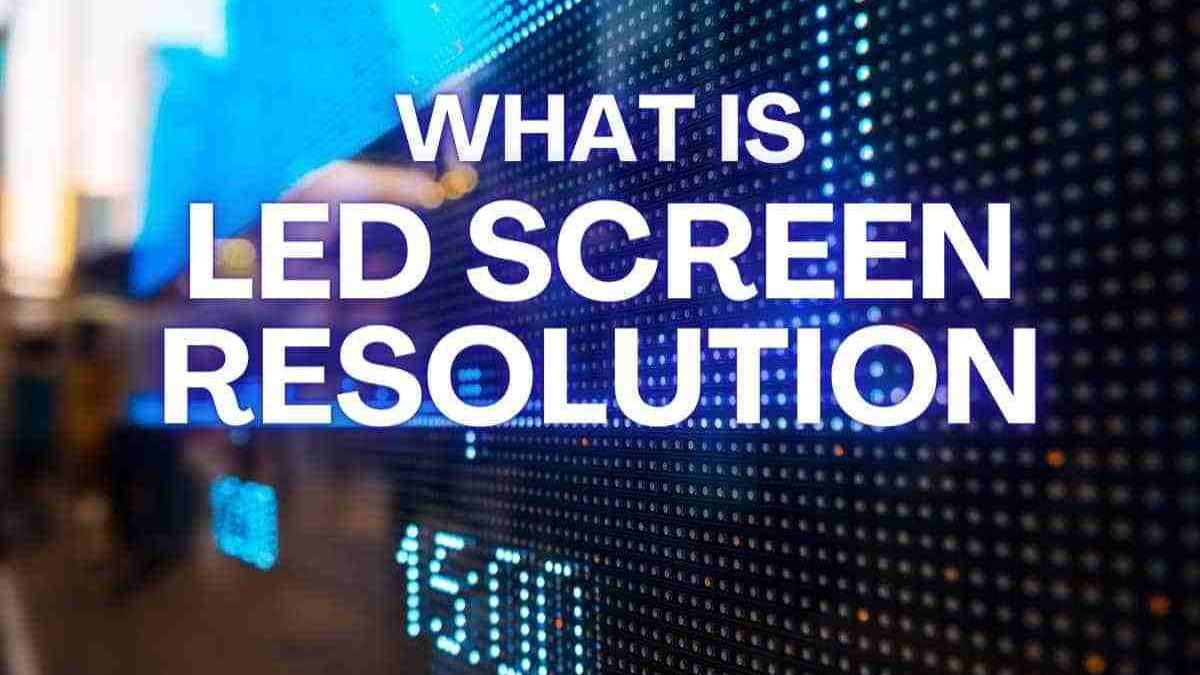Definition Led Screen
Table of Contents
Introduction
The LED display is a screen technology that uses an LED panel as a light source. Nowadays, many small and large electronic devices use LED displays as a screen and an interface medium between the user and the system. Modern electronic devices, such as mobile phones, televisions, tablets, computer monitors, laptop screens, etc., use LED displays to display their output.
How do they Work?
LED screen is a new type of information display media. It is a planar screen with an LED dot matrix module or pixel unit. For example, figure 2 shows the structure diagram of the eight × 8 dot matrix LED display from the figure, 8 × 8 dot matrix requires a total of 64 LEDs, and each LED remains located at the intersection of the row and column row. Therefore, the corresponding diode will light up when the corresponding row remains set to a high level and the corresponding column remains at a low level.
Each pixel of monochrome LED display consists of one monochrome LED. That is, each pixel contains one LED. Each dual primary color LED display pixel comprises two monochromatic LEDs. That is, each pixel of the dual primary color has two LEDs.
In three primary color full-color LED displays, the diodes that make up the pixels contain three or more diodes. For example, they consist of three diodes that emit red light, green light, and blue light. To improve the display effect, some displays can be composed of four diodes: two red LEDs, one green LED, and one blue LED. In this way, the purpose of the color display can remain achieved according to the color matching principle of the three primary colors.
Techopedia explains that LED Display
The LED display is one of the main commercially used displays. The enormous merits of LED display are its efficiency and low energy consumption, which remain especially needed by pocket computers and charging devices such as mobile phones and tablets. An LED display includes several LED panels composed of several LEDs.
LEDs have numerous advantages over other light-emitting sources that can remain used alternatively. In addition to being energy efficient, LEDs produce more brightness and higher light intensity. An LED display differs from the vacuum fluorescent display used in consumer electronics such as car radios, VCRs, etc.; therefore, the two should not be confused.
Advantages of LED Monitor
LED monitors offer many advantages over CCFL-backlit monitors, including:
- Often less expensive.
- Wider dimming range.
- Overall more reliable.
- They can remain used at a lower temperature and with much less power, just 20 watts.
- Higher dynamic contrast ratio.
- Longer lifespan and less impact on the environment.
History of LED Displays
The first LED display remain generally believed to have been developed by James P. Mitchell in 1977. The prototype LED display was shown to the public at the SEF (Science and Engineering Fair) in Iowa on March 18, 1978. It was demonstrated again at SEF in Anaheim, California, on May 8, 1978. The prototype was 1/4 inch thick and won General Motors and NASA awards.
Can the LED screen be Curved?
Yes, LED screens can be curved. Curved LED displays are the latest trend, and consumers want to buy them. These LED screens are now on the market at a reasonable price, and there are many customers for this model.
Advantages of curved LED screens:
- It provides a complete immersion
- Provides better visibility.
- It does not require much space.
- It seamlessly provides a three-dimensional view.
Why should we install an LED screen?
High-resolution LED screens are the next phase in digital display tech. As a highly winning form of digital media, it takes attention and delivers a message with impact and vibrancy.
Like a flat-screen TV, it can play and display images, video, text, and live data on a much larger physical scale. However, unlike traditional forms of display, LED screens are not bathed in bright ambient light and are completely seamless. In addition, it provides you with one seamless video wall that makes your message completely unmissable.
We have seen many bad installations where companies decide to install LCD video walls over an LED screen in a very bright environment with inferior results.
Suitable for use in very bright environments: outdoors, windows, bright atria
Completely seamless – the LED screen is a single block of video with no visible connections on the display
Size factor – only LED screens provide such an effect on large scales
Better value for money – screens can offer better value and lower costs compared to other types of displays
Conclusion
Both outdoor and indoor LED displays meet the need to provide an energy-efficient way to display your brand to a massive target market. But there are some very distinct differences between the two LEDs.

